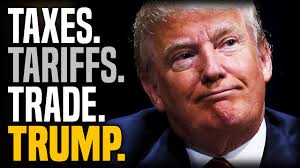Trump’s trade flashpoints in Asia

President Trump hates trade deficits — and he’s visiting a region where the U.S. has a lot of them.
The U.S. runs deficits with all five countries where Trump is spending time on his lengthy tour of Asia, including particularly big ones with China and Japan.
Experts say Trump’s fixation on trade balances as a way of viewing economic ties between countries is misplaced and risks undermining the broader relationships. But that’s not stopping him from complaining about the issue during his Asia trip.
Related: Asia braces for Trump’s trade trash talk
“Try building your cars in the United States instead of shipping them over. Is that possible to ask?” he said Monday to a small group of top Japanese and U.S. business leaders in Tokyo.
Here’s what you need to know about America’s ties with Japan and the other nations Trump is visiting:
Japan
Economy: GDP of $ 4.9 trillion, the third biggest in the world. Forecast to grow 1.5% this year by the International Monetary Fund.
U.S. trade: Fourth-biggest U.S. trading partner. Trade deficit was $ 57 billion last year.
Related: Trump knocks U.S.-Japanese trade relationship as unfair
Flashpoints: The trade deficit the U.S. runs with Japan is its third largest. The only bigger ones are with China and Mexico.
Japan was one of the biggest backers of the Trans-Pacific Partnership, the massive trade deal Trump killed in January, and is now among the countries pushing for a new agreement without the U.S.
The Trump administration, meanwhile, has signaled it wants a direct free trade agreement with Japan, something Tokyo isn’t so keen on. Sensitive issues include Japan’s car market, which the U.S. says unfairly favors domestic automakers.
Related: Donald Trump has a history of bashing Japan
South Korea
Economy: GDP of $ 1.4 trillion, the 11th biggest in the world. Forecast to grow 3% this year by the IMF.
U.S. trade: Sixth biggest U.S. trading partner. Trade deficit was $ 18 billion last year.
Related: South Korea’s economy and markets are flying high
Flashpoints: Trump isn’t happy with the U.S. free trade agreement with South Korea. In the past, he’s slammed the deal as “horrible” and threatened to scrap it.
The U.S. trade deficit with South Korea has increased since the deal came into force in 2012, from slightly more than $ 5 billion in 2011.
Talks between the two countries on the trade deal have so far made little progress. Cars and electronics are two of the major industries that are likely to come under scrutiny.
China
Economy: GDP of $ 11.2 trillion, the second largest in the world. Forecast to grow 6.8% this year by the IMF.
U.S. trade: The biggest U.S. trading partner. The trade deficit was $ 309 billion last year.
Flashpoints: The massive U.S. trade deficit with China has been a frequent Trump target. He’s slammed it as “horrible” and “embarrassing.”
Trump claims that unfair Chinese trade practices have decimated American industry and siphoned off jobs. But he hasn’t followed through on campaign threats to slap huge tariffs on Chinese goods and officially label the country a currency manipulator.
Trump has said he’s taken a softer stance because he needs Chinese support for his efforts to address the nuclear threat from North Korea. But analysts have questioned how long his patience will last.
In August, he stepped up tensions by requesting an investigation alleged Chinese theft of U.S. intellectual property.
Related: What an all powerful Xi means for the rest of the world
Vietnam
Economy: GDP of $ 201 billion, the 46th largest in the world. Forecast to grow 6.3% this year by the IMF.
U.S. trade: Vietnam-U.S. trade has grown rapidly over the past decade. The trade deficit in goods was $ 32 billion last year (data on trade in services not available).
Flashpoints: Vietnam is another country that has a big trade imbalance with the US. The trade deficit the US runs with the Southeast Asian country has more that doubled in the last few years.
Vietnam was seen as one of the biggest losers from Trump’s decision to yank the U.S. out of the TPP.
But in the face of a China’s growing influence in the region, Vietnam wants to stay in Trump’s good books. Premier Nguyen Xuan Phuc visited the White House back in May and played along with Trump’s enthusiasm for foreign visitors to trumpet investments they’re making in the U.S. economy.
Related: Quest: Trump and trade come home to roost
Philippines
Economy: GDP of $ 305 billion, 35th biggest in the world. Forecast to grow 6.6% this year by the IMF.
U.S. trade: The Philippines is a relatively small export market for the U.S., ranking 31st in the world. The trade deficit in goods was $ 1.8 billion last year (data on trade in services not available).
Philippine President Rodrigo Duterte didn’t see eye to eye with President Obama.
Flashpoints: The U.S. has historically had close economic ties with its former colony, but they have become more strained in recent years.
The Philippines controversial president, Rodrigo Duterte, seethed at President Obama’s criticism of his bloody war on drugs and announced last year a “separation” from the U.S. in favor of a pivot toward China and Russia.
The Philippines still relies on U.S. business to fuel its big call-center industry, though. And Trump and Duterte get along well, according to the White House.
